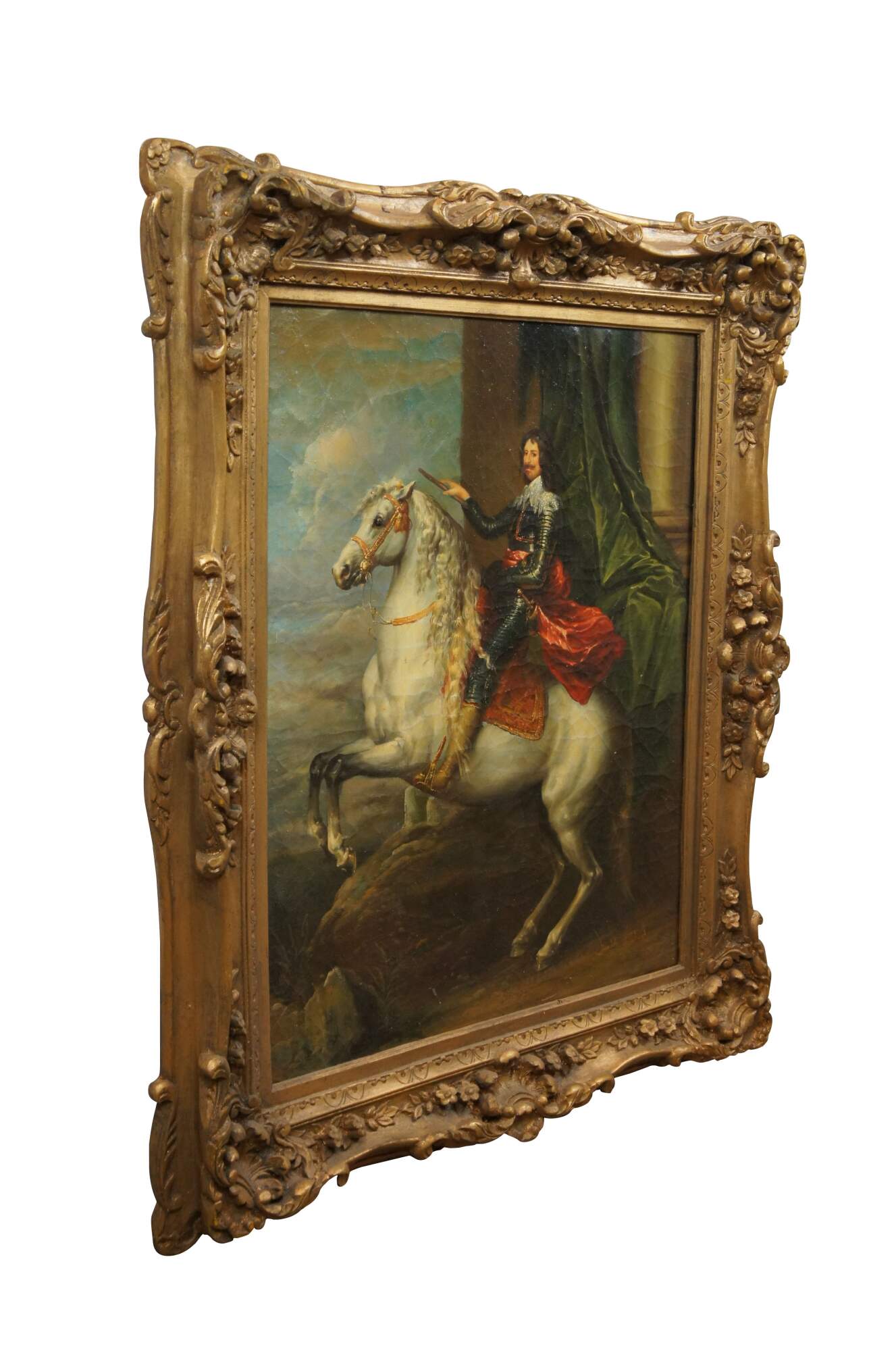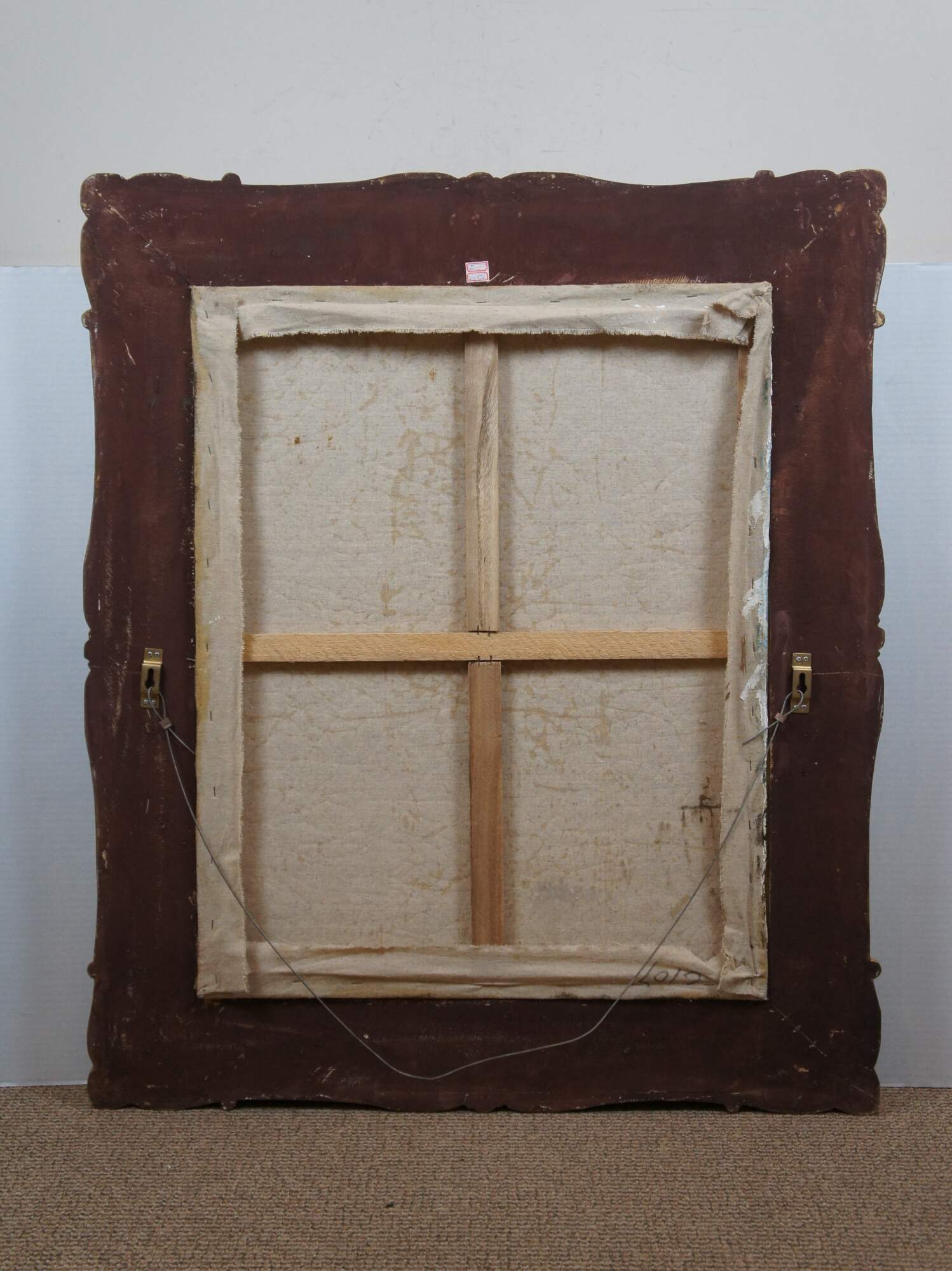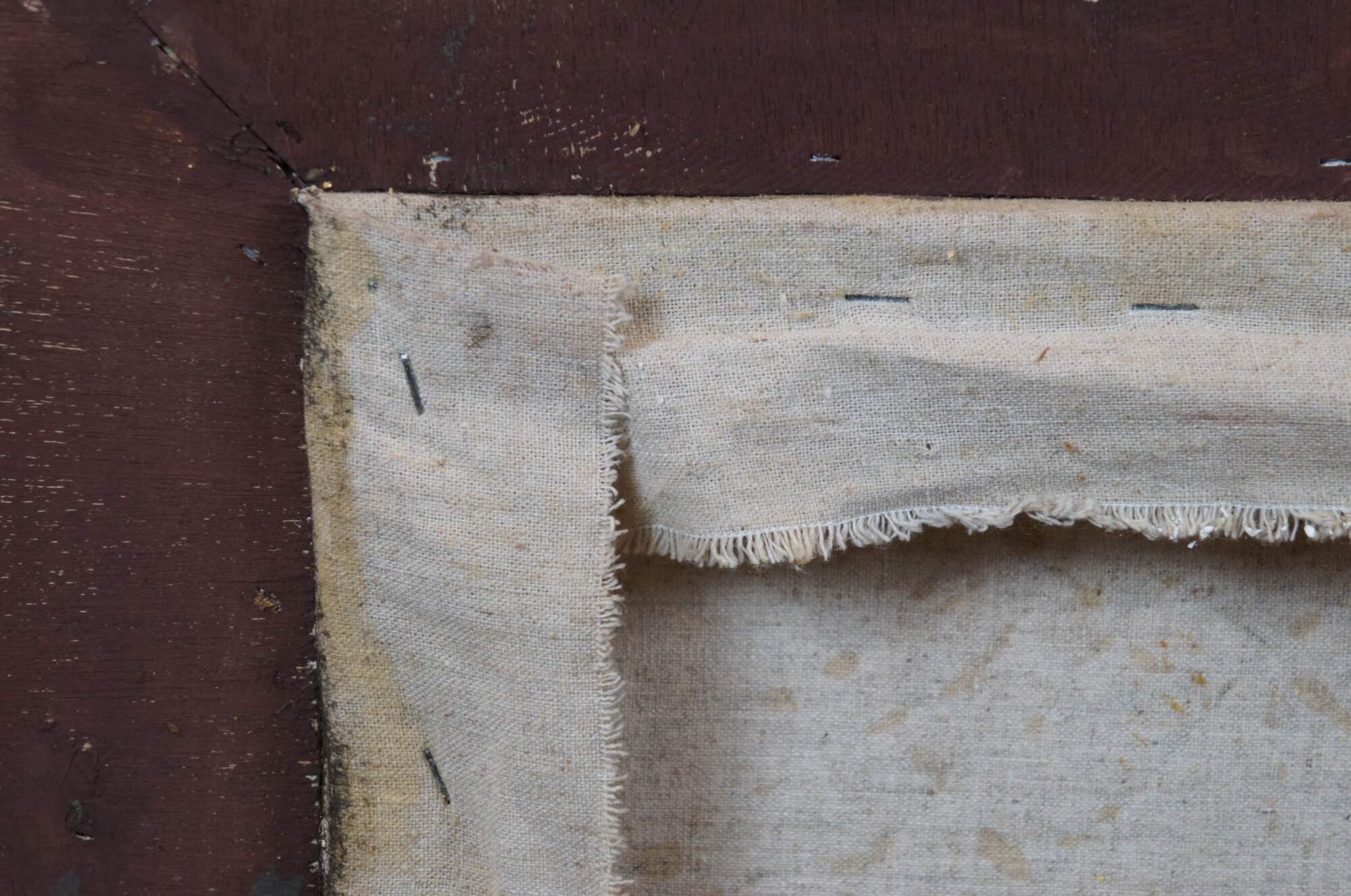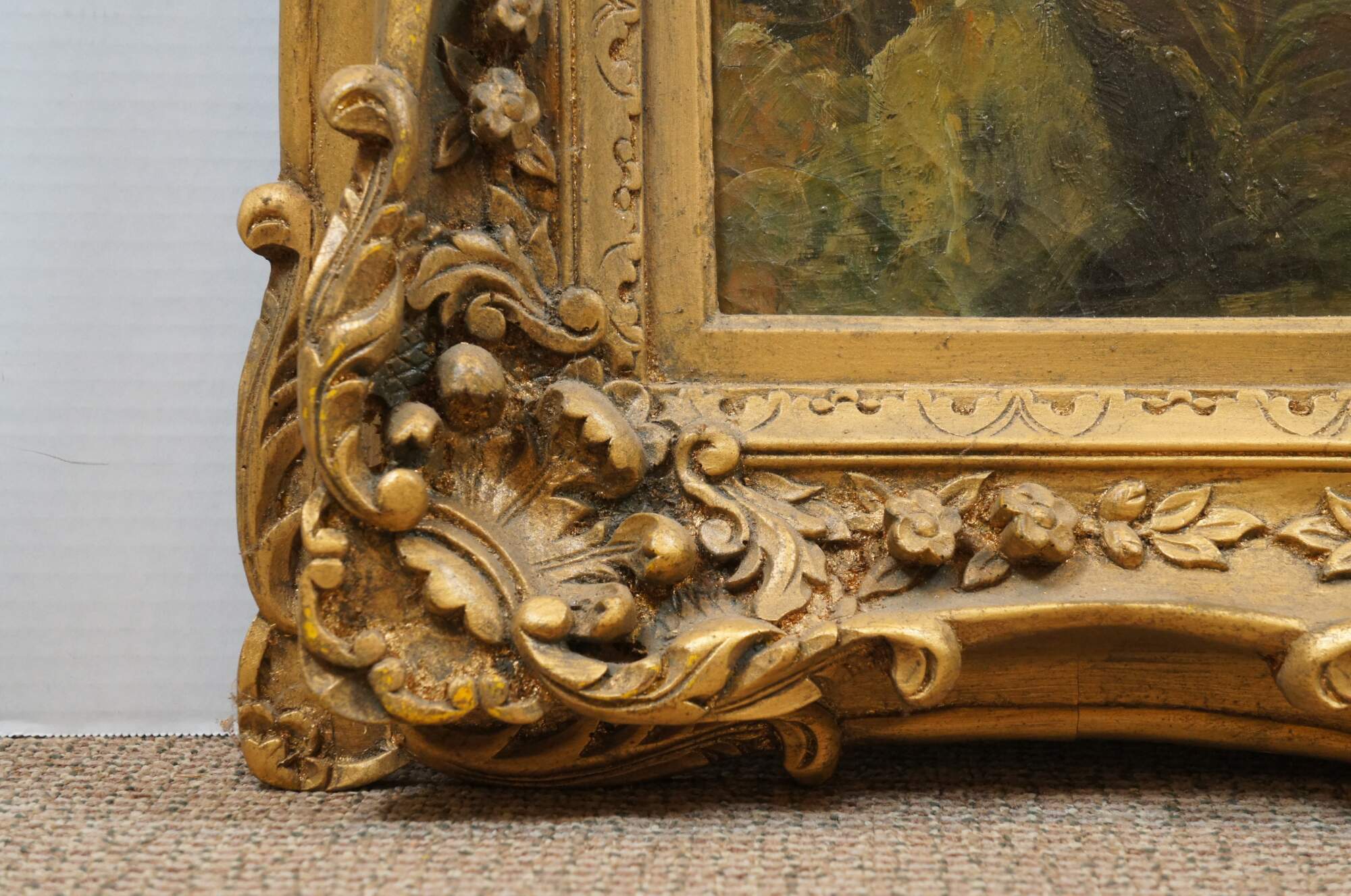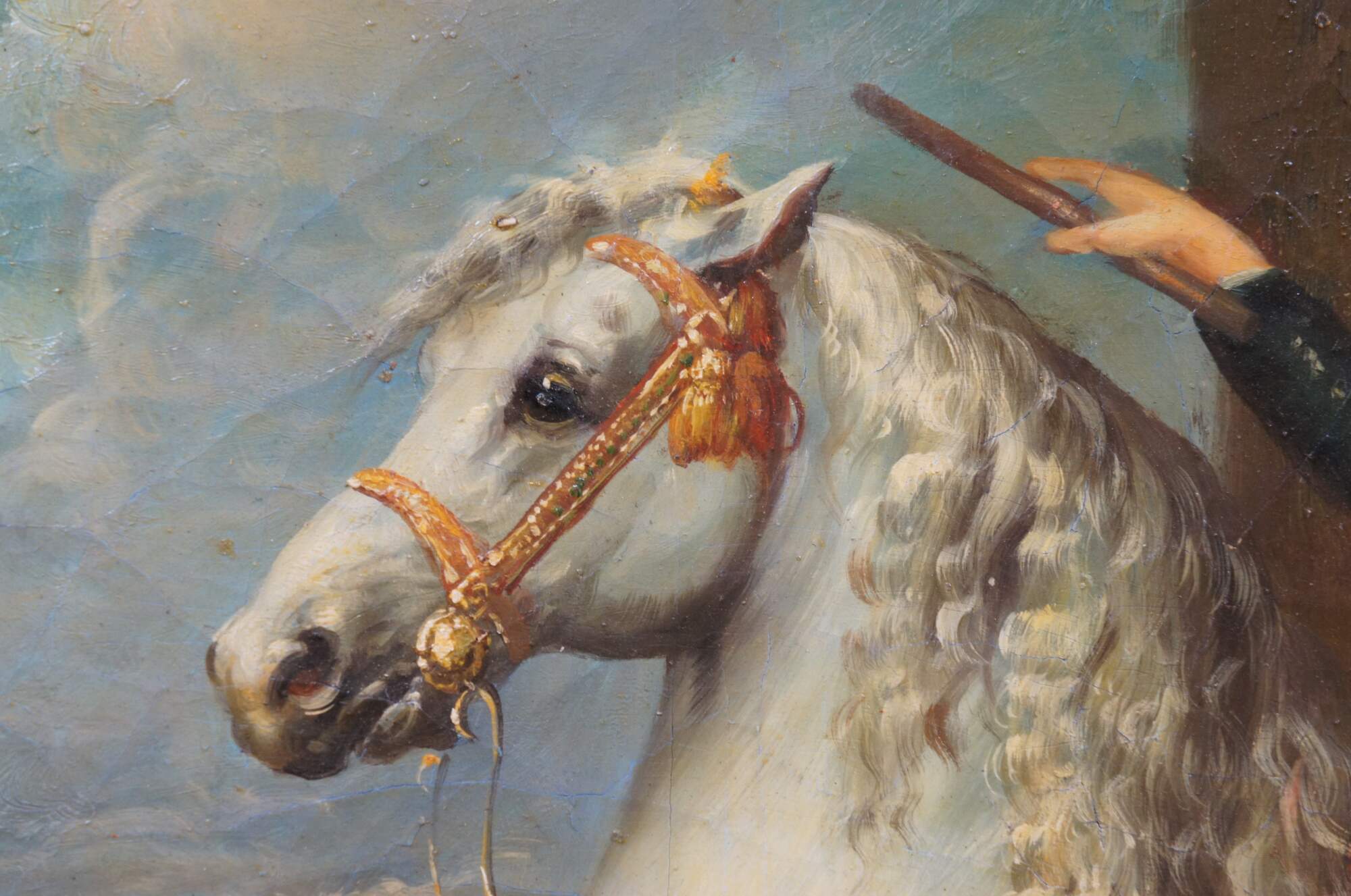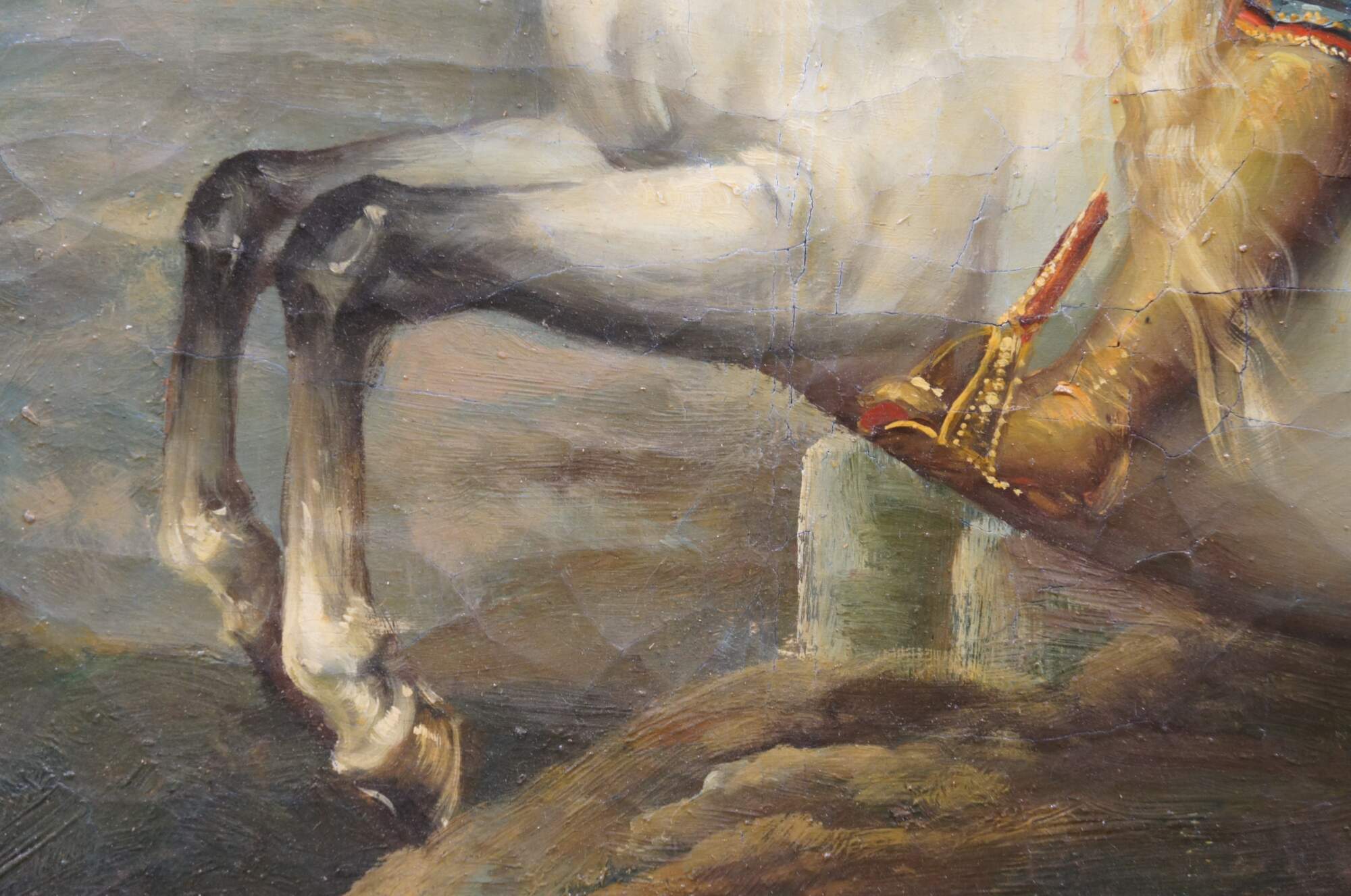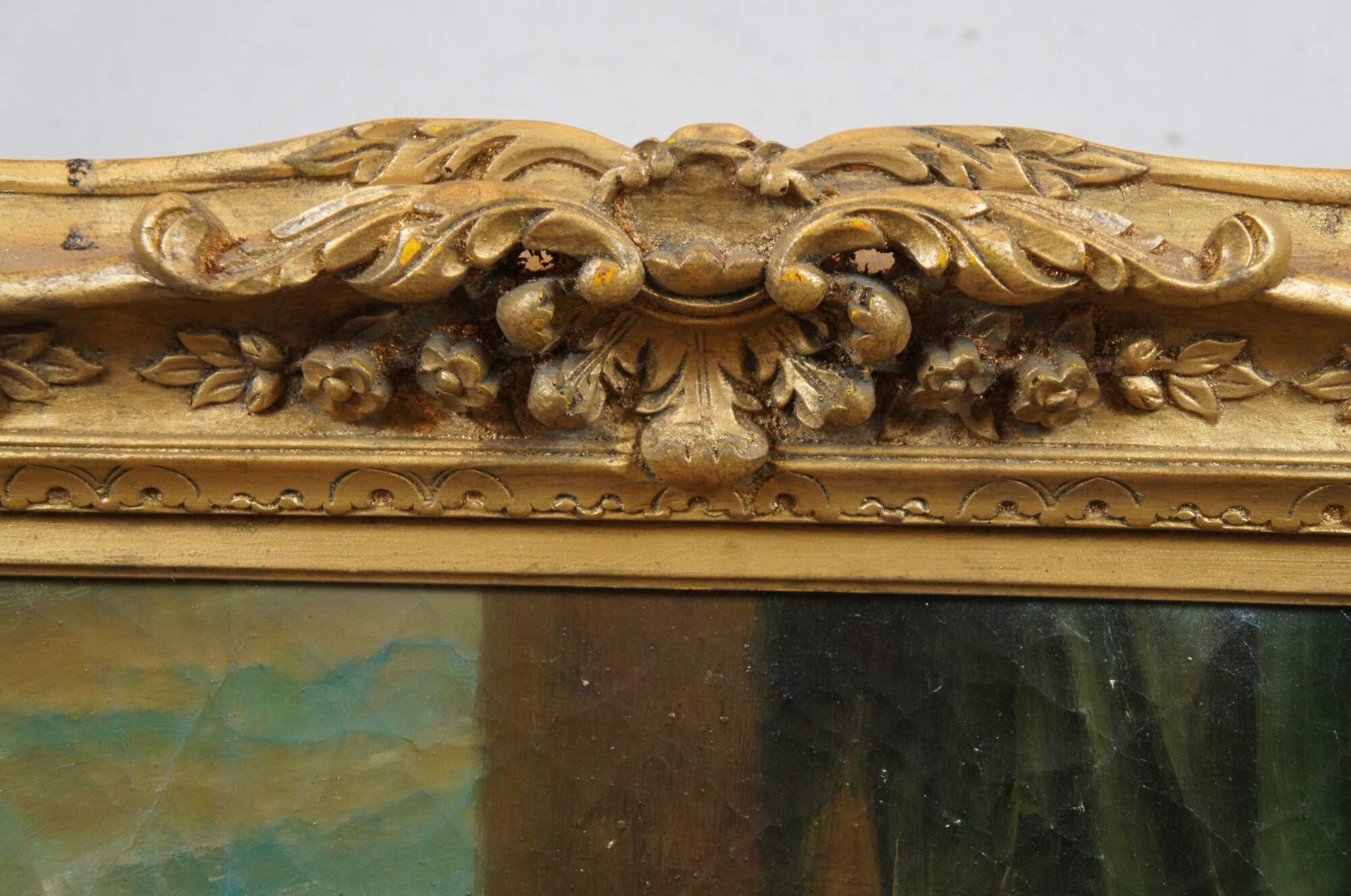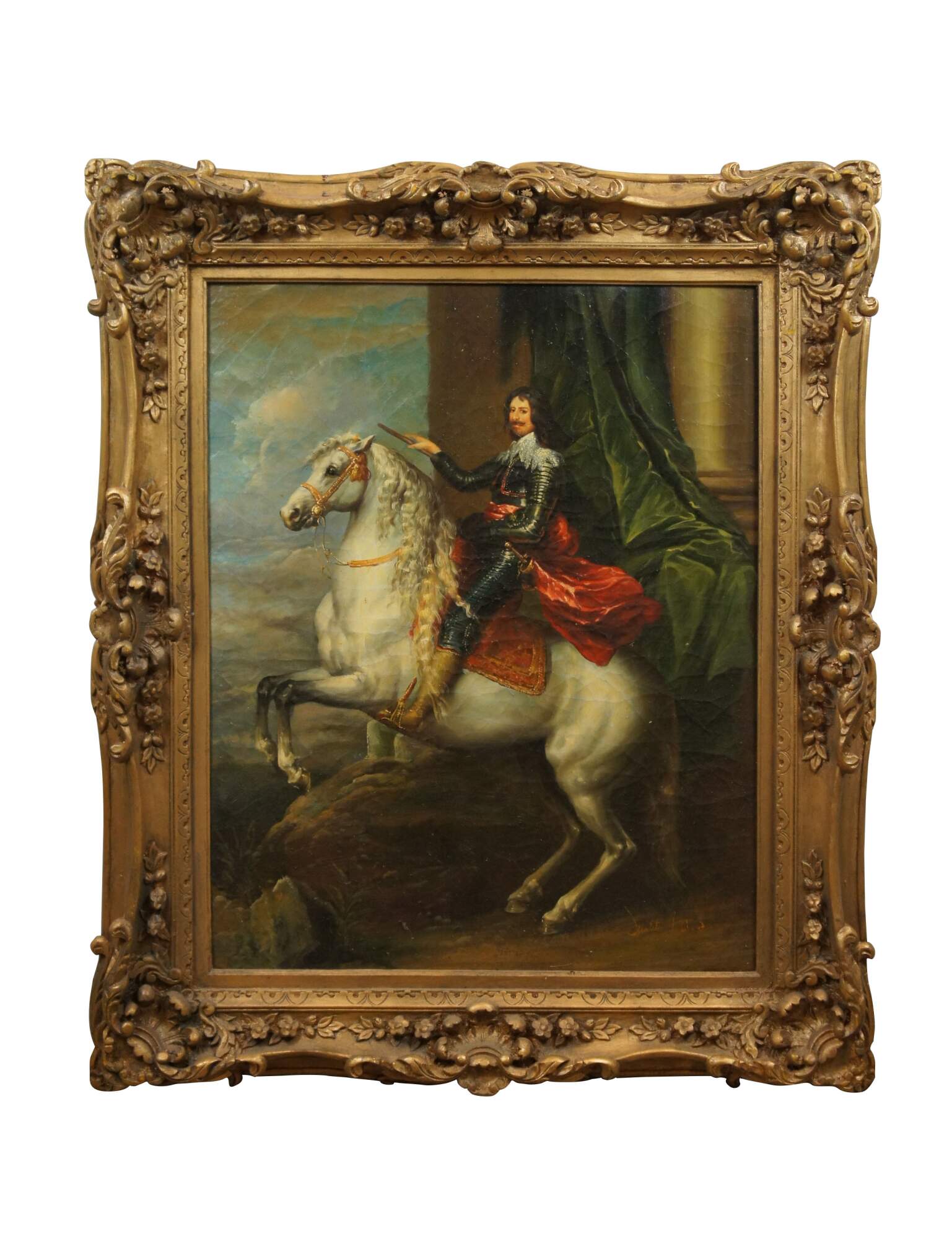
Portrait of Thomas Francis Military Horse Oil Painting After Anthony van Dyck
Sold
Shipping:
Free Shipping Included
Delivery:
Estimated 2-15 Business Days
Payments:
Credit Card, Check, Cash, PayPal, Apple Pay, Venmo
Returns:
30 Days 100% Money Back Guarantee, Buyer Pays Return Shipping
Description
Late 20th century oil painting on linen after "Equestrian Portrait of Thomas Francis of Savoy, Prince of Carignano" originally painted in 1634 by Anthony van Dyck. Gold floral and foliate frame.
Thomas Francis of Savoy, Prince of Carignano (Tommaso Francesco di Savoia, Principe di Carignano, 1596-1656) was an Italian military commander and the founder of the Savoy-Carignano branch of the House of Savoy, which reigned as kings of Sardinia from 1831 to 1861, and as kings of Italy from 1861 until the dynasty's deposition in 1946.
"Equestrian Portrait of Thomas Francis, Prince of Carignano is a 1634 painting by Anthony van Dyck, now in the Galleria Sabauda in Turin. It shows Thomas Francis, Prince of Carignano on a prancing horse, as an allegory of his holding the reins of command even in difficult moments. He is shown wearing the insignia and red sash of the Supreme Order of the Most Holy Annunciation, conferred on him in 1616 by his father Charles Emmanuel I, Duke of Savoy. In 1742 the work was sold to the King of Sardinia."
"Sir Anthony van Dyck (Dutch: Antoon van Dyck 22 March 1599 – 9 December 1641) was a Flemish Baroque artist who became the leading court painter in England after success in the Spanish Netherlands and Italy. The seventh child of Frans van Dyck, a wealthy silk merchant in Antwerp, Anthony painted from an early age. He was successful as an independent painter in his late teens and became a master in the Antwerp Guild on 18 October 1617. By this time, he was working in the studio of the leading northern painter of the day, Peter Paul Rubens, who became a major influence on his work. Van Dyck worked in London for some months in 1621, then returned to Flanders for a brief time, before travelling to Italy, where he stayed until 1627, mostly in Genoa. In the late 1620s he completed his greatly admired Iconography series of portrait etchings of mainly other artists and other famous contemporaries. He spent five years in Flanders after his return from Italy, and from 1630 was court painter for the Archduchess Isabella, Habsburg Governor of Flanders. At the request of Charles I of England he returned in 1632 to London as the main court painter. With the exception of Holbein, van Dyck and his contemporary Diego Velázquez were the first painters of pre-eminent talent to work mainly as court portraitists, revolutionising the genre. Van Dyck is best known for his portraits of the aristocracy, most notably Charles I, and his family and associates. He was the dominant influence on English portrait-painting for over 150 years. He also painted mythological, allegorical and biblical subjects, including altarpieces, displayed outstanding facility as a draughtsman, and was an important innovator in watercolour and etching. His influence extends into the modern period. The Van Dyke beard is named after him. During his lifetime, Charles I granted him a knighthood, and he was buried in St Paul's Cathedral, an indication of his standing at the time of his death.
Condition
Good Overall - Gentle wear; crazing to surface
Dimensions
33.5" x 2.5" x 40" / Sans Frame - 23.5" x 29.5" (WIdth x Depth x Height)
